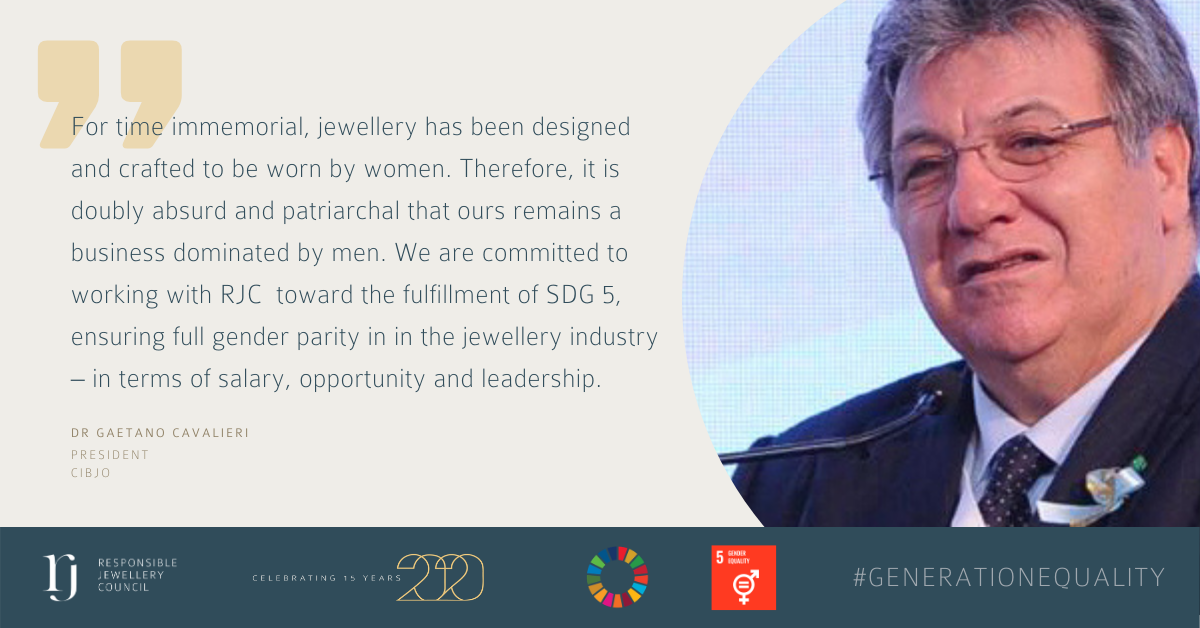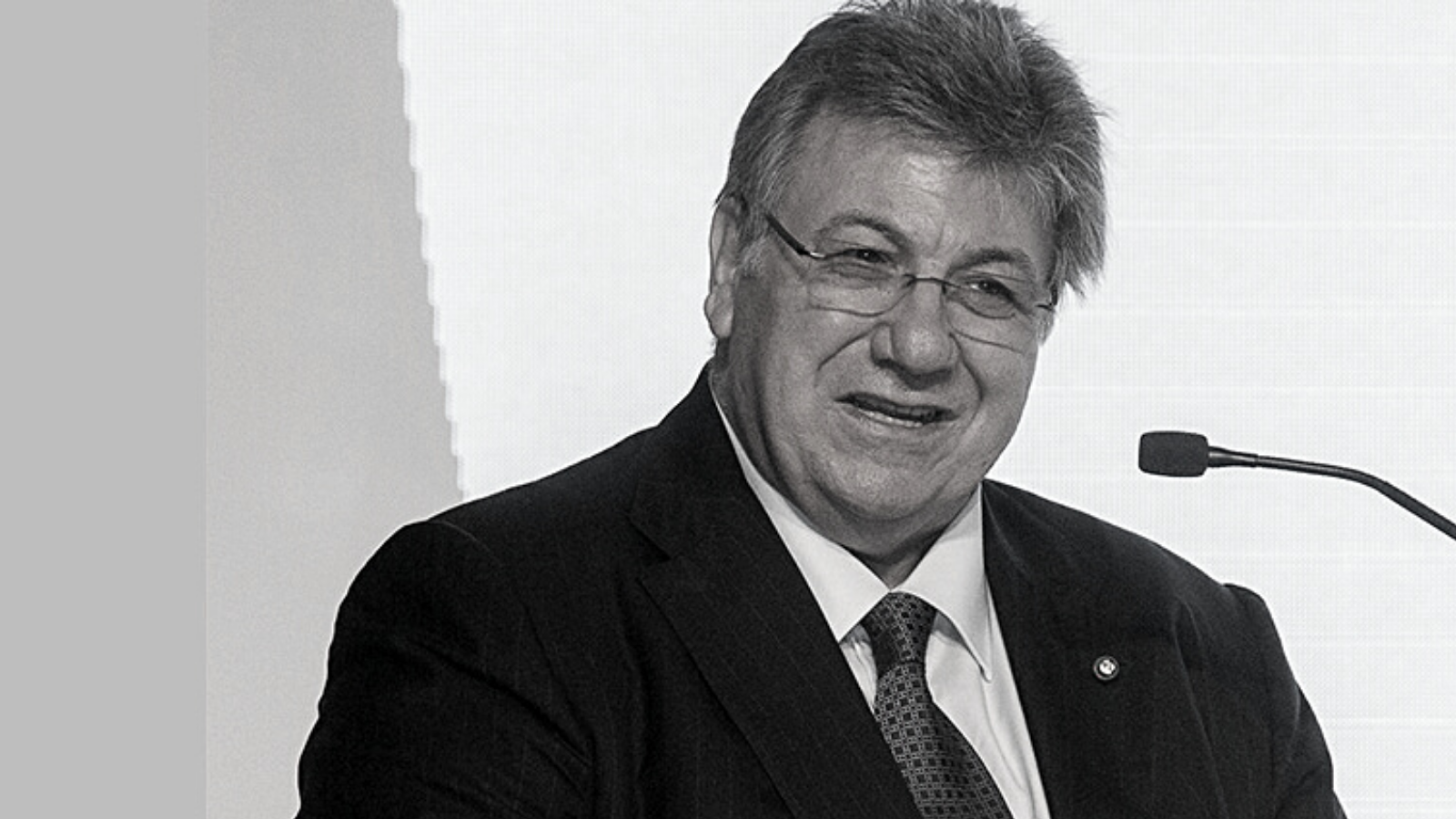Gaetano Cavalieri – President – CIBJO
What was your highlight of Vicenzaoro?
I think for most of us it was not any one single event or experience, but the very fact that the show was organized in the way it was, after the past 18 months that we all have experienced, and just as importantly the reaction of all those who attended, both as exhibitors and attendees.
True, we were all required to provide proof of being vaccinated before entering, and everyone wore masks inside the Vicenza exposition centre. But there was a sense of normality and getting back to what we do we do best. This turned Vicenzaoro September 2021 into a celebration, and it showed that we as an industry have it within us to face down every challenge, and to meet adversity with courage.
What do you think were the key learnings from the event and your panel on sustainability?
Essentially there were two panels, each of which examined one of the 17 Sustainable Development Goals from a particular perspective. The first focused on SDG 5, gender equality, but narrowed its focus to the mining sector. The second looked at SDG 12, responsible consumption, and looked at the development of circular economies in the jewellery trade.
But there was a common theme to both, and that is that we, as an industry, have both the capacity and responsibility to contribute to building stronger and more equitable societies and economies, as well to engendering a more sustainable environment for future generations. As our seminar panellists emphasized, building a responsible jewellery industry means more than just ensuring that we do no harm. Our goal as a business community is not simply to be profitable financially, but also to serve the societal and environmental needs of all of our stakeholders.
I should point out that RJC was an official co-presenter of the sustainability seminars, and Iris Van der Veken, its Executive Director, was a key panelist in the first, where she was able to share her vast knowledge and experience about her and RJC’s effort to equalize the position of women in our industry, at all levels and across the globe. Other RJC officers and members were panelists as well, in both seminars. We also were delighted to be able to offer a platform to RJC to present its just released Gender Equality Report, both to the audience in Vicenza and the global audience viewing the event online.
How do you see the agenda of sustainability evolve in our industry?
I believe we have seen a significant evolution. Twenty years ago, when the conflict diamond problem was being described as an existential crisis, many in the industry did not consciously perceive that our actions, passive or active, may have impacts on society. That changed, of course, but the initial effort – certainly with the Kimberley Process Certification Scheme – primarily was to ensure that we prevent negative effects.
CIBJO’s receiving special consultative status in the UN Economic and Social Council in 2006 was an inflection point, because it meant that we committed the industry to the fulfilment of the Millennium Development Goals, which in 2015 were replaced by the Sustainable Development Goals. Consequently, for the first time, a jewellery industry body advocated for a proactive approach to sustainability and social responsibility. That same year we joined the UN Global Compact.
I believe that RJC has undergone a similar process. The Code of Practice largely defines a strategy of eliminating negative elements in jewellery’s chain of distribution, but RJC’s SDG Taskforce is essentially proactive, enabling the industry to become a positive force for development.
Our joint commitment to the SDGs redefines corporate responsibility in the industry. Our ability, even as purveyors of non-essential, luxury products to be a force for sustainable development, should become part of jewellery’s value proposition.

You have been a key partner throughout our SDG5 Generation Equality campaign and the launch of our gender equality report at Vicenzaoro. Can you tell us a bit about what SDG5 means to you?
It is patently absurd that an industry that produces a product that overwhelmingly is worn by women should have remained patriarchal for so long. And I am not only talking about the board room or senior management, but also about middle management down to the factory floor. In fact, most probably the only class of employees that more accurately reflected our end consumers were the sales staff at the retail level.
That is changing, although most probably not fast enough. Women need to be brought into our workforce and decision-making bodies, not only because equal opportunity is the right thing to do, but because a properly diverse management will inherently do things better.
And gender equality does not only mean parity of numbers, it also needs to be reflected in wages and benefits, and in company policies in terms of maternity leave, for all parents, health care and more.
Furthermore, gender equality must also not only be regarded a concern of the developed economies. Women work in artisanal and small-scale mining sector, and there, as well as elsewhere, it is incumbent upon all of us not only to ensure fair opportunity, and also that they can function a safe and secure working environment.
RJC new Gender Equality Report is an important new tool in this campaign, and CIBJO is proud to have collaborated in its creation. Just as important is the call to action that RJC has issued, urging RJC members and the broader industry to address the issue of gender equality, while provide them insight as to where this is most urgent and how it can be done.
Looking ahead to 2022, what are the key strategic priorities for CIBJO on sustainability?
There are many challenges, but I would emphasize responsible environmental strategies, quite simply because even during these difficult days of COVID-19 it is still the most daunting problem facing our planet.
Global warming threatens all of us, and especially those living in less robust societies and economies, where its impact is especially catastrophic.
For CIBJO this is not a new campaign. Our greenhouse gas measurement initiative is not about seven years old, and we are actively involved is seeking more sustainable marine environments for the pearl and coral sectors. We also strongly support the efforts the large mining companies to encourage conservation and biodiversity.
The industry’s effort to reduce global warming needs to comprehensive, integrated and global. RJC and all other industry bodies must be part of it. We cannot change the world by ourselves, but we can do more together.

